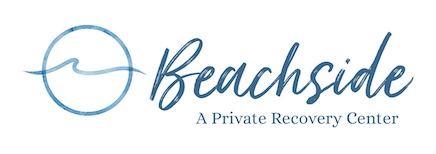Practicing mindfulness can make all the difference when embarking on your journey to recovery and mental wellness. By focusing your emotions and thoughts on the present, negative behaviors and responses can be left in the past as you continue on in your path toward healing. Using mindfulness techniques, such as deep breathing, body scanning, and journaling can help you regulate your emotions, reduce stress responses and triggers, and promote emotional balance.
Here are five mindfulness techniques you can utilize working toward addiction recovery.
1. Deep Breathing
Simple breathing exercises can make a big difference in your day-to-day life and can be completed in just a few seconds. When experiencing stress or negative emotions, it can be difficult to remain in the now and regulate your breathing. By being mindful of your breathing, you can take back control of your behaviors and improve your emotional balance.
- Choose a comfortable position. You can lie on your back on the floor or sit up in a comfy chair. Try a few different positions each time you practice deep breathing to feel what works best for you.
- Close your eyes and breathe in. Feel the air pass through your nose, into your lungs, and all the way to your abdomen. Focus on your breath as you hold it there for a few seconds. Then breathe out slowly through your mouth, again, being aware of the air pushing out of your lungs and through your mouth.
- Place one hand on your stomach and the other on your chest. Feel your body rise and fall with each breath and try to notice how your hands move as you breathe in and out.
- Manifest positive air flowing in and negative air flowing out. Imagine with each breath into your nose, you are filling your body with peaceful and calming energy. Likewise, with each breath out of your mouth, you are expelling negative energy and stress.
2. Body Scanning
Body scan meditations can help you reconnect with your body and become in tune your emotions again. Like deep breathing, body scanning only takes a couple minutes a day, and can be done a few times a week to check in with yourself and your emotions on your healing journey. To start. find a comfortable position lying on the floor or sitting in a chair that fully supports you back, neck, and shoulders, close your eyes, and follow these simple steps:
- Pay attention to your environment. Notice how the textures of the ground or the chair feel and pay attention to the temperature of the room and the smell of the air. Recognize that you are safe in your environment.
- Bring your attention to your body. Start at your feet and feel the support of the floor or the chair beneath you. Work your way up to your legs and abdomen, noticing the weight and pressure of your body against a surface and the sensations you feel. Allow your hands and arms to soften and your neck and shoulders to release any tension.
- Notice your entire body in the present and take a deep breath. Slowly open your eyes and allow your vision to focus back to normal. Give yourself time to slowly stand up again and return to your daily life.
3. Stretching
Take a mindful approach to becoming aware of your body by practicing simple and easy stretches for a few minutes every day. Find a space for you and your body to breathe. Here are a few stretches to put into practice:
- Relax with a deep neck stretch. While seated, shrug your right shoulder towards your ear as high as possible. Then take your left hand and pull the right side of your head, feeling your left ear creep closer to your neck. Hold for a few seconds and repeat.
- Take a moment for a shoulder roll. Roll your shoulders in slow circular motions, forwards and backwards, and feel your muscles in your neck, shoulders, and arms relax.
4. Journaling
Journaling is a positive action in response to understanding your emotions and encountering triggering situations. Take the time to choose a journal that fits your style and find a comfortable spot to write. Putting your thoughts onto paper can help you recognize and organize your emotions. It can also be a good outlet to express negative emotions and frustrations on the path to healing.
5. Take Regular Breaks
Give yourself grace on the path to addiction recovery and allow yourself to take breaks for yourself and your emotions throughout the day. Become present with yourself in small, five minute increments in your daily life and practice mindfulness from anywhere at anytime.
Beachside Rehab in West Palm Beach, Florida, takes a holistic approach to addiction recovery that uses the principles of mindfulness. Contact our trained admissions counselors at 866-349-1770 to discuss how we can help.

